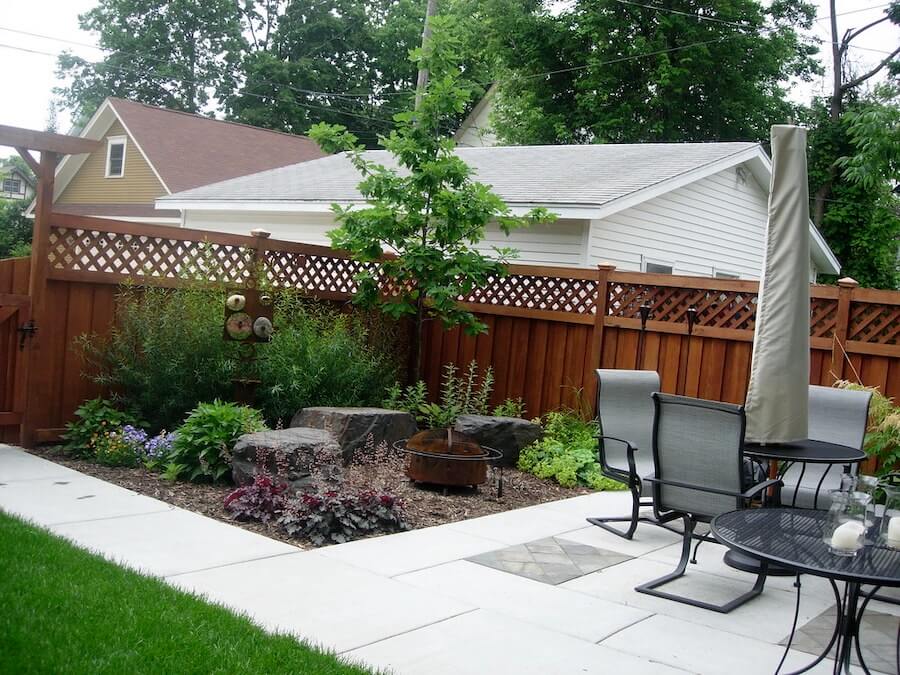An outdoor patio is a helpful addition to your backyard. Yet, you must check numerous things before building one as it may violate your neighbor’s property.
So how close can the patio be to fence? This article will reveal everything needed to set up the space for your outdoor patio.
Let’s scroll down until the end to discover!
Table of Contents
How Close Can Patio Be To Fence?
The Residential Design Codes have regulations regarding the columns and roof of your outdoor patio. The rule states they must not be at least one meter away from the fence.
How close to the boundary should you install a patio?
The Residential Design Codes permit you to make the most of your area, but you must maintain a one-meter buffer between the columns of your patio and the boundary.
For the most recent information, it is advisable to consult your local council as rural and urban regions have different regulations. If you have your patio completely installed, the installer can arrange this for you.
Can you build a patio closer than 1m to the fence?
Yes, but you must submit a construction application and consider paying an additional charge.
Contact a patio installer to carry out the work for you, or ask your local council for further details. They can inform you how near you can reach your neighbor’s barrier without breaking the law.
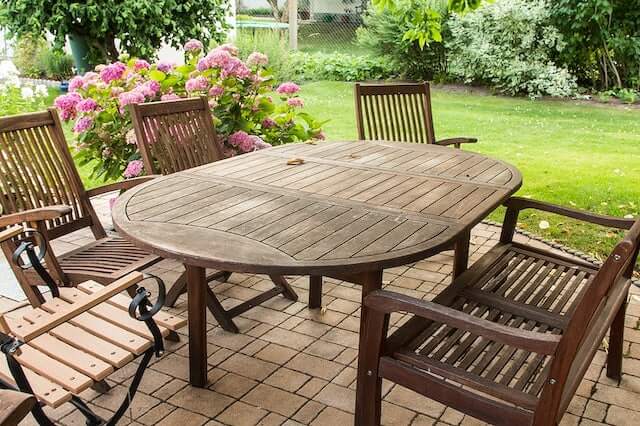
How To Plan An Outdoor Patio?
Now you know how close your patio can be to the fence, but it’s not the end of the day. Here are some other tips for planning it properly.
Choose the location
Many homeowners decide to attach their patio to the back of their house, but you don’t have to follow this idea. It looks good even when built on the side of your house or even standing alone in your yard.
To determine the best location, grab some chairs and put them in one position.
Then, sit on the chair, and feel how wonderful it is. If you love this feeling, go for that position.
Determine the size
Your yard size determines how big your patio can be. The Homeowner’s Association (HOA) also limits your patio’s size.
For example, they may not allow you to cut down trees across your property line. Hence, you won’t be able to save space for a deck.
Luckily, patios are available in all sizes. A small deck can bring you enjoyable moments if you only have limited space.
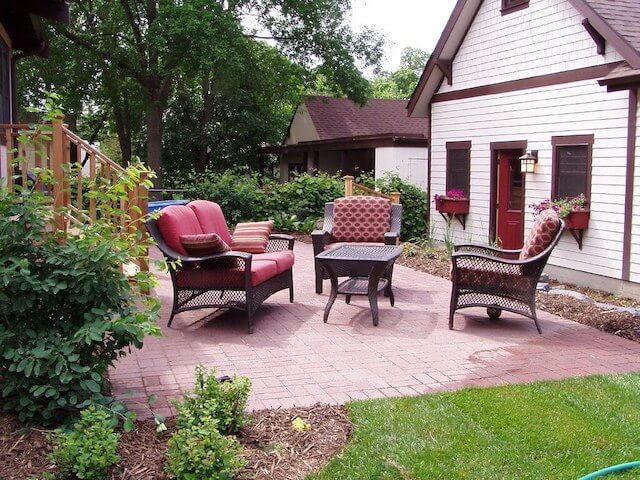
Pick the material
Material is an essential factor because it determines how your patio looks and how long it can last. There are numerous options to select:
- Concrete
There aren’t many materials that can be as versatile as concrete.
This tried-and-true mix, which blends sand, gravel, cement, and water, gives you many options.
Concrete will mold and adapt to almost any surface shape when using well-built molds. You may also love it due to its sturdiness and ease of maintenance.
- Brick
Brick blends very well with many different architectural and landscape designs since it is robust, long-lasting, and neat-looking.
This material is adaptable and can work for patio flooring, paths, walls, and borders. Formal or rustic hardscape elements and housing types can benefit from it.
- Flagstone
The third option in this list is flagstone, a popular choice for front entries and patios. It comes in multiple stones and colors, so you can opt for the one that fits your yard the most.
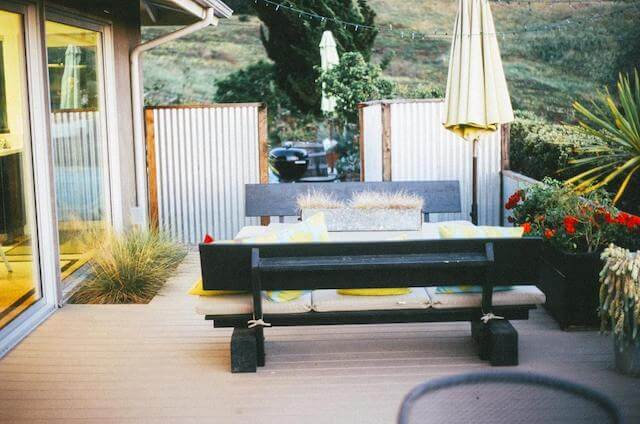
Choose patio amenities
You can’t complete the design without adding ornamental or functional amenities. If you don’t know where to start, think about some choices like:
- Couches
- Grills
- Range hoods
- Water fountains
Your family might also love a cornhole board off your patio to provide entertainment for your parties.
Consider landscape elements
You might add potted plants or build a garden that matches the shape of your patio. After construction upsets the soil and removes existing shrubs, vegetation will warm the whole space.
The plants eventually grow into a stunning landscape that makes your house an even nicer spot to spend time with nature.
Hardscaping is a fantastic idea as well. It includes solid and permanent features to beautify your property. You may construct a stone pathway, fire pit, or cement block wall for your patio.
Those elements last all four seasons. They’ll enhance the appeal of your home without having a green touch.
Another benefit of hardscaping is that it requires minimal maintenance. You can also change it easily to establish a different vibe in your garden.
Uproot the grass
You may not expect this, but your patio may suffer from mold growth and moisture retention if the ground is too spongy and soft. Hence, uproot the grass before building anything on it.
It would be best to discuss the landscaping precautions to take with professionals to construct a durable, high-quality patio.
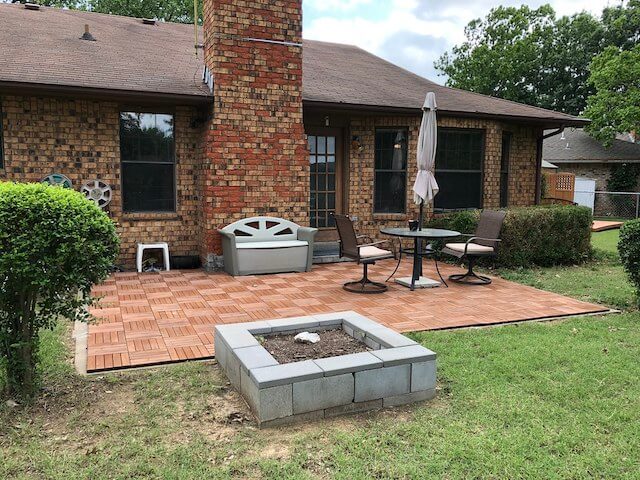
Dos and Don’ts When Building An Outdoor Patio
We also include some extra tips for building an outdoor patio. Take note to build a strong patio and avoid all potential problems.
Dos
- Some places have stricter restrictions regarding outdoor spaces than others. To avoid confusion, consult your local government before starting your project.
- Your patio should be the right size for the space available. An excessively large structure will make your home look too enormous or unfriendly.
- If you plan to enjoy your time outdoors with friends and family frequently, think about building an outdoor kitchen.
- Ensure sufficient light in the evening by installing electric lights, string lights, or candles.
- Select materials that can endure harsh weather, demand minimal upkeep, and are simple to clean.
- Consider using stone or brick pavers on the patio. They are enduring, elegant, and very simple to care for. Moreover, they offer excellent traction for your summer barbecues.
Don’ts
- Do not use dark hues in your patio unless they’re naturally so, like brick or slate. Light hues are better at reflecting light and establishing a bright, airy space.
- Be careful not to use materials that contrast with the remainder of your landscape.
- Don’t overlook the importance of any drainage problems.
- Be aware of your limits. It’s crucial to understand your terrain type before buying materials and designing the patio.
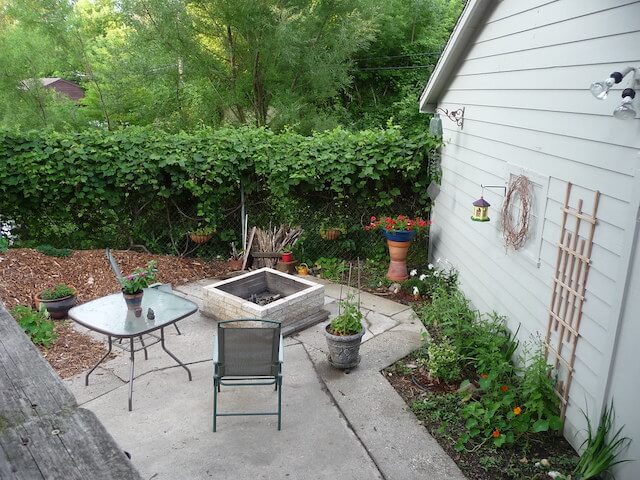
Frequently Asked Questions
1. How close to the property line can you build a patio?
On a corner property, patios must stay by two feet from the outer side lot line and the backside lot line.
The permitted outer and front side yards can expand up to five feet into roofed, open-sided porches with a maximum height of 14 feet. This size includes steps, eaves, and cornices.
2. How close to a fence can I build a deck?
If your deck is shorter than two feet, set it four feet from the side and rear lot lines. If it’s higher than two feet, install it four feet away from the sidelines and 11 feet 6 inches away from the rear line.
3. How is your landscape around a fence?
There is no right or wrong when landscaping around a fence. If you don’t know what to do, try the following ideas:
- Renew the classic fences by coloring them up or polishing it
- Use plants to add space and texture to the yard
- Set up trellises
- Install flower beds next to the fence
- Use huge fiberglass planters to build your fence
- Install a corner firepit
- Keep the barrier clean at all times
- Grow ornamental grass along the pathways
4. What should I put between my garden and fence?
If the blank space between your garden and fence annoys you, try filling it using plants or pathways.
The best plants to grow next to a fence are Ivy, Clematis, Honeysuckle, Lilly Pilly, Climbing Roses, and Cherry Laurel.
If you want to build a pathway, gravel, stone, and brick will be the most excellent choices.
5. How easy is it to build a patio?
Building a patio is difficult because you have to care about many things, such as its location, size, material, purpose, and decorative items.
Moreover, you must consult your local government about relevant regulations.
Yet, you will find this project interesting since there is no limit to art and creativity. Feel free to set up your space to chill out every day.
Conclusion
Remember that you must build your patio at least one meter from the fence line. To be sure, ask your local council for a detailed guide.
Do you have any more questions about the patio setup? Please comment in the section below, and we will get back to you soon.
Thank you for reading!

